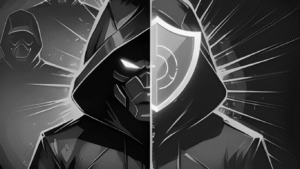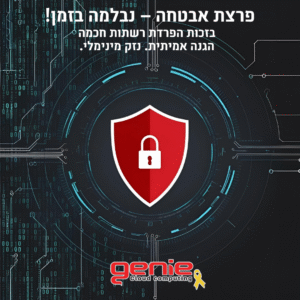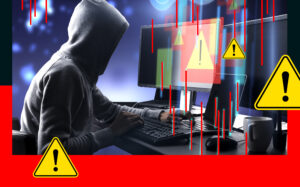Business continuity - is your business prepared for disaster?
In the global business village, where the dependence on the technology that connects us all is almost absolute, the chance of a disruption or an attack that will wreak havoc on business is higher than ever. While the large companies invest a lot of resources in implementing effective solutions to prevent these horror scenarios, the small and medium-sized businesses have only recently discovered the enormous importance of having a business continuity plan and a disaster recovery strategy.
Interested in more details on ensuring business continuity
Using a custom DR solution? Leave details Here
A disaster recovery (DR) solution?
"Disaster Recovery Solution" explains Guy Hochman, CEO of Genie,” forms part of a broader process known as business continuity
And he is trying to deal with a large-scale business disruption. More specifically, a disaster recovery solution focuses on processes, policies and procedures that shorten the recovery time of the technological infrastructures essential to the organization's operations. Only a DR solution will allow you, the small business owner, to ensure business continuity, without fearing that a natural disaster or any cyber threat will lead to the shutdown of work, financial loss, image damage and damage to reputation. A DR solution will give your business and your partners in the supply chain the confidence that any disruption in your business will not affect their business and will provide your customers with the peace of mind that comes from knowing that your products and services will always continue to be there for them.
Why are small and medium businesses adopting DR solutions right now?
Over the past 3 years, Genie has seen increasing demand for DR solutions among our medium-sized business customers - and not by chance:
Customers are more aware of the cyber threats and the devastating results that accompany such an attack, so today, DR is no longer seen as "luxury insurance" or as an expense that goes down the drain. Why did these insights come only now? The reasons are in front of you:
1. "It won't happen to us..."
The threat of cyber attacks is a prime example: small organizations tend to be complacent about cyber security and assume that they are more immune to malicious attacks than larger organizations. Well, the facts show that small organizations are more at risk of successful cyber attacks because they don't have the budget and expertise to implement cyber security strategies. These data are confirmed in a recent study conducted by the British Federation of Small Businesses (FSB) and revealed that during 2016, 71% of the businesses experienced a network hack that led to the loss of contracts, wasted working hours and damage to the day-to-day dealings with suppliers and customers.
2. "Is it really worth it?"
In the past, the cost-benefit equation was simple: "How can we justify the cost of investing in a DR solution against risks and threats that may never happen?". Today, when cyber security is the hottest topic, the question has become "How is it possible not to justify the investment?!"...
3. "Does the DR solution fit our needs?"
Until 3 years ago, the DR solutions did not fit the needs of medium-sized businesses, as a result of unreasonably high setup costs
And because the technological solution was too complex to implement for these businesses. The good news is that many DR providers have understood the disaster recovery needs of small and medium-sized businesses and have begun to develop customized solutions for them that guarantee business continuity at a reasonable cost-benefit ratio.
Key principles for creating a DR solution in your business
- Start by defining the reasonable recovery time for your business. This definition has the greatest impact on the implementation of the DR solution and it varies from business to business.
- Create a priority for dealing with disruptions. For example: if cyber attacks are a more common scenario these days, more companies will give priority to planning a recovery process from such an attack, over recovery processes from "natural" disasters, such as flooding or fire.
- Once your DR solution is in place, remember to take care of ongoing maintenance. This is the only way to be sure that the system is active, up-to-date and suitable for its purpose.
- There are procedures for testing the robustness of the DR system by simulating a "real event", at least once a year (be sure to include this ability already in the solution planning phase)
- Supervise the entire process, to avoid deviations within the budget.
Interested in more details on ensuring business continuity
Using a custom DR solution? Leave details Here
You may be interested in:

אירוע משפחות סוף קיץ 2025


פישינג בעסקים: איך לזהות, למנוע ולהגיב נכון


החשיבות של סריקות פגיעויות באבטחת סייבר






